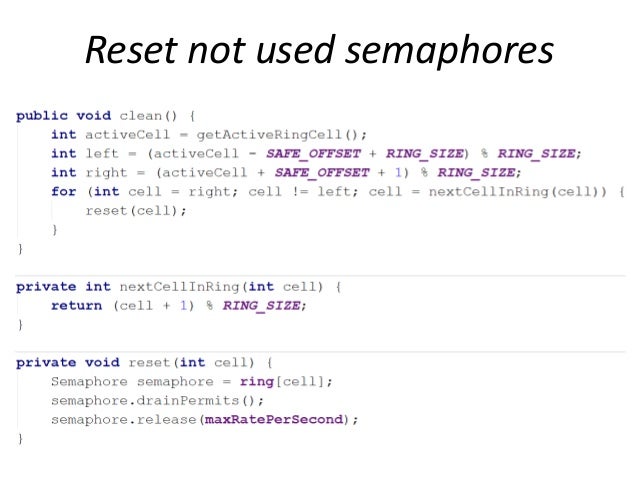
Read rwrite Locks 176 Summary 178 Chapter 14 - Building Custom Synchronizers 179 14.1. Choosing Between Synchronized and ReentrantLock 176 13.5. Iv Java Concurrency In Practice 13.4.

The default value is set to false in Java 7, and to true in Java 8.Heinz Kabutz has created a training course based on Java Concurrency in Practice. It can be activated with the following JVM options: -XX:+TieredCompilation. It uses the C1 compiler to startup, and as the code gets hotter, switches to the C2. Only core part is 80 000 lines Still, I think it is a nice practice for those who are familiar with the basics and starting to write real applications in Java (46 months experience).Interpreter (-Xint) C1 (-client) C2 (-server) Tiered Compilation came in Java 7. Elasticsearch - Real World Usage - DraftAnswer (1 of 2): I’m tempted to say log4j2, but actually it’s repo size is insane.
These methods are wait (), notify () and notifyAll (). The Object class in java contains three final methods that allows threads to communicate about the lock status of a resource. Wait, notify and notifyAll. Building Web Application with React and Redux1.
Deploying Game Store React App to Azure with FTP Deploying Game Store React App to Netlify Concurrency, Pro Asynchronous Programming with. Concurrency, Concurrent Programming on Windows.pdf. Concurrency, Java Concurrency in Practice.pdf.
Building Course Player with React and Socket.IO Building Course Player with Node.js and Socket.IO Building Course Player with SignalR and ASP.NET Building Realtime Application with SignalR
Java Concurrency In Practice Github Full Stack App
Building Online Code Editor with React and Express Creating Full Stack App with React and Node.js Continuously Deploy React and Socket.IO App to Heroku with Travis-CI
Continuously Deploy Full Stack React App to Heroku with Travis-CIPublic static synchronized void add ( int value )If a method is declared as synchronized, then it will acquire either the instance lock or the static lock when it is invoked, according to whether it is an instance method or a static method.The two types of lock have similar behavior, but are completely independent of each other. Continuously Deploy Full Stack React App to Heroku and Netlify with Travis-CI Deploying Full Stack React App to Heroku
Only one thread can own a monitor at a given time. synchronized(this.getClass()), if an object is availableIn Java, the synchronization is implemented with a concept called monitors. synchronized(Blah.class), using the class literal Similarly, acquiring the static lock only blocks other threads from invoking a static synchronized method it does not block other threads from invoking an un-synchronized method, nor does it block them from invoking a synchronized instance method.Outside of a method header, synchronized(this) acquires the instance lock.The static lock can be acquired outside of a method header in two ways:
Each object of that class has an associated lock. A monitor is a class with only private fields. 3.1 The Monitor ConceptIn the terminology of Java, a monitor has these properties: All other threads attempting to enter the locked monitor will be suspended until the first thread exits the monitor.
The condition variable is accessed by calling ‘wait/notifyAll/notify’. If a method is declared with the synchronized keyword, it acts like a monitor method. The lock can have any number of associated conditions.Every object in Java has an intrinsic lock and an intrinsic condition. Since all fields are private, this arrangement ensures that no thread can access the fields while another thread manipulates them. In other words, if a client calls obj.method(), then the lock for obj is automatically acquired at the beginning of the method call and relinquished when the method returns.
Reentrant Locks are provided in Java to provide synchronization with greater flexibility. The code which manipulates the shared resource is surrounded by calls to lock and unlock method.


 0 kommentar(er)
0 kommentar(er)
